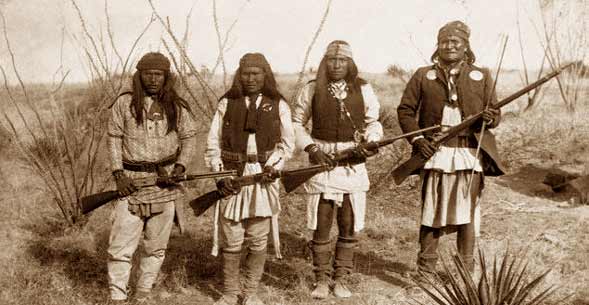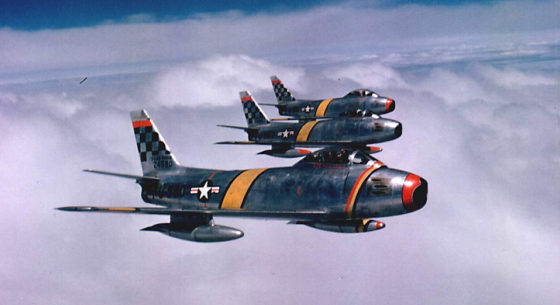
“Up to a quarter of the American army would be deployed to the southwestern United States to take part in his capture.”
AT THE TIME of his surrender to American authorities in 1886, the Apache warrior Geronimo was perhaps the most hated man in the United States.
The infamous war chief was condemned by The New York Times as being the worst kind of savage. And according to one U.S. official, Geronimo was the “greatest mass murderer in American history.” [1] These claims were not without merit.
During his decades-long insurgency, which was fought first against Mexican settlers and later Americans, the notorious Geronimo and his followers laid waste to entire towns while butchering hundreds, perhaps thousands, of civilians and soldiers alike. Eventually, up to a quarter of the American army would be deployed to the southwestern United States to take part in his capture.
According to an article published this week on the news site The Daily Beast by noted historian Marc Wortman, 19th Century America’s abhorrence for Geronimo is comparable to the hatred most U.S. citizens today feel for the Taliban.
The story, entitled “The Bin Laden of His Day? A New Biography of Geronimo” is actually a review of a new book by Robert M. Utley on the warrior leader. And while Wortman spends a much of his article evaluating the new book, he also draws some compelling comparisons between America’s fight against the Chiricahua Apache in the 1880s and the counter insurgency currently being waged in the mountains of Afghanistan.
Wortman argues that like today’s Taliban, Geronimo and his followers waged a hit and run war across a vast barren landscape to terrorize what they saw as ‘foreign’ invaders seeking to modernize the natives’ homeland and traditional way of life – a fascinating comparison.
The article points out that after defeating the Apache, America’s hatred for Geronimo actually softened. Wortman reports that following the warrior’s confinement to a military prison in Florida, Geronimo became something of a popular celebrity. In fact, after his release from custody, he published a widely read account of his life, headlined a famous Wild West show, and made appearances at the St. Louis World’s Fair in 1904. More amazingly, he was even invited to parade through the streets of the capital on the occasion of Theodore Roosevelt’s presidential inauguration. After his death in 1908, the rehabilitation of Geronimo’s reputation would only accelerate. As memory of his atrocities faded into history, future generations would see him not as a butcher but a symbol of justified native resistance to the oppression of white America. In fact, by 2009, Congress voted on a resolution to recognize Geronimo as an American hero. You can actually read the bill here.
Wortman’s piece also raises an intriguing question: Someday will America’s opinion of bin Laden evolve, perhaps even soften in the same way as it did for Geronimo? Might future generations, particularly those that didn’t live through 9/11, feel some measure of sympathy for the terrorists’ cause? It’s a difficult concept to imagine in 2012, but according to Wortman, Americans in 1886 likely would have considered the prospect of a future Congress celebrating the life of Geronimo equally outlandish.
To read Wortman’s article click here.
For information on Utley’s book, simply entitled Geronimo, click here.










Can’t the same be said about the Germans and the Japanese? Seventy years ago, equal hate intensity was there if not more intense. Look at us now: we rank German and Japanese cars generally better than domestic? Not that I do… O:-)
Reblogged this on Masako and Spam Musubi and commented:
Isn’t this an interesting perspective?
Reblogged this on Stuff That Interests Me and commented:
Very interesting stuff from one my favorite American bloggers.
I enjoyed your article. And, here is a story about Geronimo… a very curious and interesting story…
As I got the story from my grandmother when I was around 8 years old (I’m 69 now); my great grandpa (German by birth, an migrant to the US) and Geronimo were close friends. My great grandpa lived in St. Louis during the 1904 St. Louis World’s Fair. He was in the crowd watching the opening day parade pass by. Geronimo, ridding in a wagon and waving at the crowd, noticed my great grandpa among the spectators. Geronimo promptly stopped the wagon, got down, and walked towards his friend. Fearing the worst, the crowd ran in all directions until they saw Geronimo and my great grandpa hugging, laughing and talking. So, for what it’s worth, that is the story, a very interesting and curious story, my grandmother told her grand-kids. Thank you for restoring a found memory. Sometimes what people perceive can be so strong that people react to their perception, rather than to what turns out to be the facts.
That’s an amazing story. Thanks for posting it here. I wonder how the two men knew each other in the first place.
NH MALLET… I have no idea how or when they became friends. If I was ever told by my grandma, or anyone else, how they became friends, I can’t recall.
The reason why Mexican and American soldiers yelled Geronimo was a warning too every body that the Apache’s were there they would jump off a cliff rather than be captured and tortured.